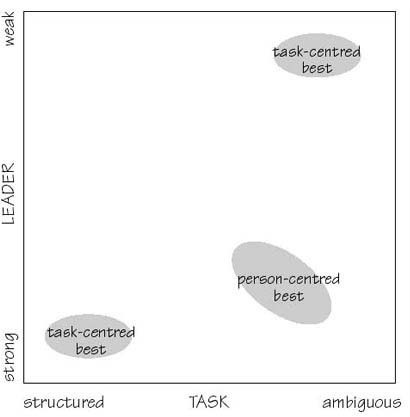5.3.3 Contingency theories
Contingency theories are based on the idea that there is no single best style of leadership but that the most effective style depends upon the circumstances. The aspects of the circumstances identified as significant are:
the leader's characteristics and style (thus absorbing the two earlier theories).
the subordinates' expectations and experience.
the nature of the task and the organisational environment.
For example, Fiedler's contingency theory (Fiedler, 1967) focuses on the degree of structuring in the task and the leader's organisational power (i.e. the power to reward and punish). He finds that where the task is highly structured, and the leader liked, trusted and powerful, then the most effective leadership style is a directive, task-oriented style. Similarly, where the task is ambiguous and the leader is in a weak position, then the same directive, task-oriented style is most effective. In intermediate situations where the task is ambiguous and the leader liked and respected, then a participative, person-centred style is found to be most effective. These findings are summarised in Figure 11.

Other theories in this category focus on other aspects of the context; however, they have the same sort of structure, namely recommending different styles of leadership in different contexts.
